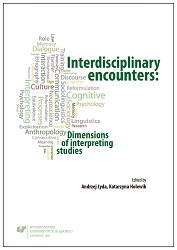Discourse prosody and real-time text interpreting: Making live speech visible
Discourse prosody and real-time text interpreting: Making live speech visible
Author(s): Ursula Stachl-Peier, Ulf Norberg
Subject(s): Language studies, Language and Literature Studies, Theoretical Linguistics, Philology
Published by: Wydawnictwo Uniwersytetu Śląskiego
Keywords: speech-to-text interpreting; speech-to-text transcription; live subtitling; discourse prosody; sentence boundaries; pitch; stress; loudness
Summary/Abstract: In real time speech-to-text interpreting a trained transcriber using a standard or specially designed keyboard translates spoken contributions into written text which is displayed on a (computer or TV) screen to be read by Deaf/deaf and hard-of-hearing people. Since typing rates are slower than speaking rates, transcribers must develop strategies that allow them to include as much of the spoken content as is possible while at the same time attaining maximum synchronicity between speech and the text on the screen. In spoken discourse, prosodic features are used by speakers to demarcate grammatical units, give particular prominence to words or phrases and indicate emotions.Auditory qualities can also be represented in written text through a range of typographicaldevices; however, their insertion requires additional time and effort. This explorative study looks at transcribers’ use of punctuation to reflect speakers’ employment of the prosodic features of pauses and pitch to demarcate the segmentation of utterances. It also investigates whether stressed words are represented in the written text. The analysis uses extracts from a videorecorded speech-to-text interpreted university seminar and a TV interview with live subtitles.
Book: Interdisciplinary encounters: Dimensions of interpreting studies
- Page Range: 161-188
- Page Count: 28
- Publication Year: 2017
- Language: English
- Content File-PDF

